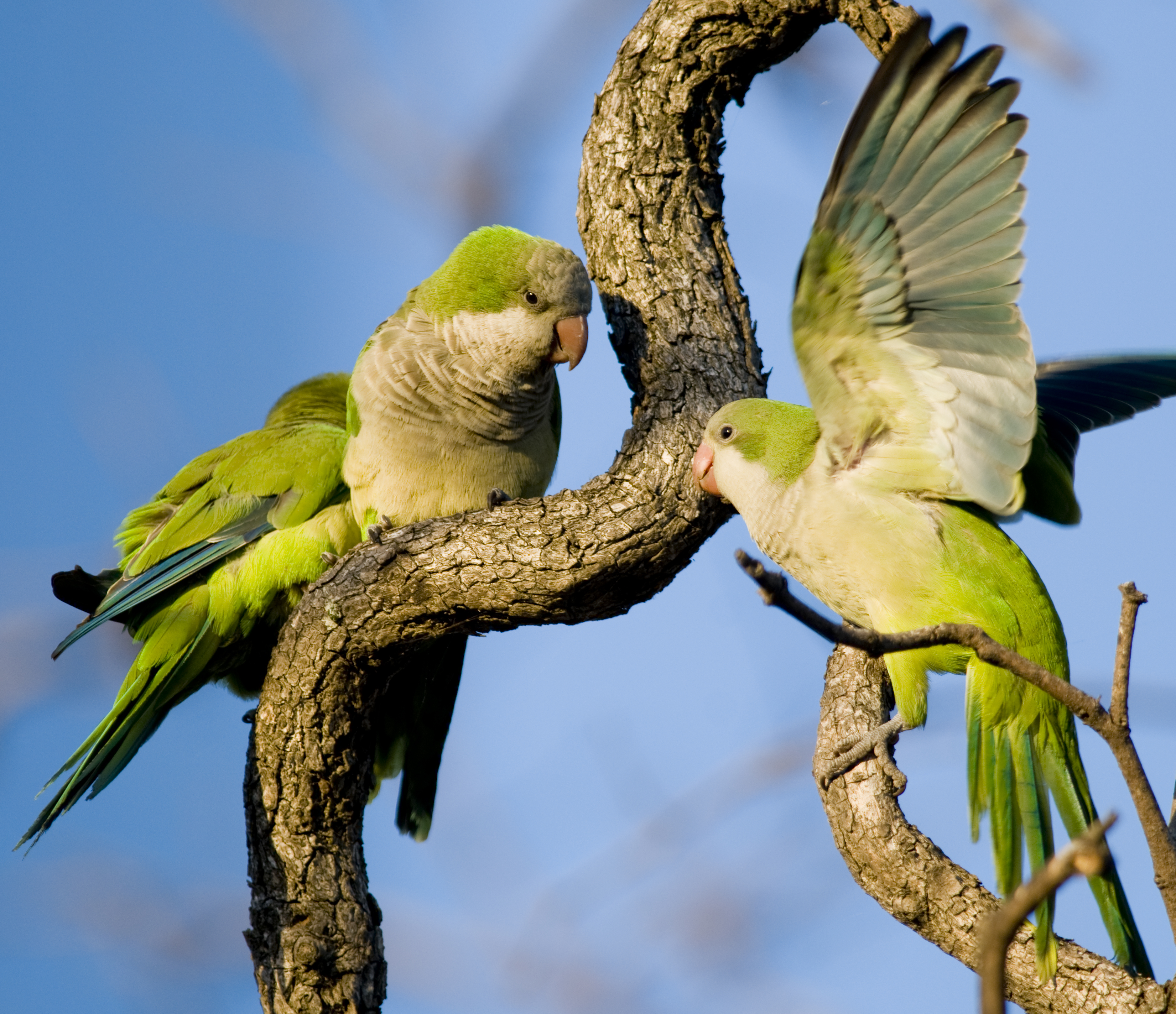

Photo by Rich Lindie
In 1939, nearly 77 years ago, the Carolina Parakeet (Conuropsis carolinensis) was declared extinct. At the time, it was United States’ only known native parrot. The cause for its extinction is not certain, but is frequently reported to be the result of deforestation. Some experts, however, believe deforestation and hunting may have reduced the populations sufficiently to allow other factors, such as disease, to be the proximate cause of extinction. Whatever the cause, the species’ population decline appears to have been rapid, occurring sometime between 1896 and 1904. The last one died in captivity in 1918 at the Cincinnati Zoo (Click on the book cover to the right to get a copy of an excellent book Errol Fuller discussing the Carolina Parakeet and other extinct species titled, “Lost Animals”).
Since 1968, a new parakeet is taking up residence in some habitats formerly occupied by the Carolina Parakeet. Also known as the Quaker parakeet, the monk parakeet is native to South America, occurring from central Bolivia and southern Brazil, south to central Argentina. Monk parakeets (Myiopsitta monachus), believed to have been accidentally or intentionally released, are now found in several states of the U.S., and can also be found in Canada, Puerto Rico, Bahamas, West Indies, England, Belgium, Italy, Spain, and Israel. In the United States breeding populations occur in Texas, Louisiana, Florida, Illinois, New York and as far north as Connecticut.
Here in Austin, as in all major Texas cities, there is an established population of monk parakeets. They are almost always found in groups, frequently searching the ground for seeds and any fallen fruit, which is reported to be their main diet. They are also frequently found on electric transmission lines crisscrossing the city.
Monk Parakeets are unique among the psittacines (parrots) in that rather than making their home in cavities, they build large communal nests using sticks, often among those same transmission lines, which is the only potential problem with any increase in their numbers.
Populations of monk parakeets are thought to be growing exponentially, and while they do not seem to pose the same pest problem in United States that they do in their native South America, there is still concern that could change. One study reports that parakeet populations will likely continue to expand and grow for the foreseeable future (Pruett-Jones et al., 2007).
Click the link below to see a short video of monk parakeets in Austin, Texas
Pruett-Jones S, Newman JR, Newman CM, Avery ML, Lindsay JR: Population viability analysis of monk parakeets in the United States and examination of alternative management strategies. Human-Wildlife Conflicts. 2007, 1:35-44.